Low back pain – degenerative defeat the articular cartilage and from beneath their bone tissues. The diseases are all the joints of the musculoskeletal system. Internal medicine osteochondrosis called complex processes, dystrophic in the intervertebral discs, the small joints of the spine and vertebrae.
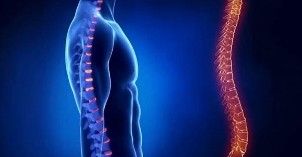
What is back pain?
Osteochondrosis of the vertebral column of the neck, breast and lumbar vertebrae. Type of disease is determined by the location variable of the tissues. On the basis of the malocclusion is violation trophic of the intervertebral discs and the vertebrae. It leads to a change in the structure of normal cartilage. Because of the degeneration of the cartilage disc loses elasticity, it changes the texture and the shape. You reduce the distances between the vertebrae, and the affected segment of the spine loses stability.
The reduction of the distance between the vertebrae, accompanied by tension in the muscles of the back, the compression of the nerve root extends from the spinal cord. This explains the origin of the pain and neurological symptoms. osteochondrosis.
Disc degeneration leads to a weakening of their external ring the fibrous. Therefore, in patients with osteochondrosis often occur protrusion (protrusion of the disk), and transmission hernia spinal (protrusion of the nucleus pulposus of the disc into the spinal canal). After the malocclusion is applied to the small joints of the spine, ligaments, intervertebral:
- occur bony prominences of the vertebrae;
- the patient is difficult to bend, straighten;
- you lose the flexibility of the spinal column;
- appear to be the vertebral subluxations;
- bend the affected areas of the spine (kyphosis, scoliosis).
Degenerative changes in the cartilage and bone tissue are a normal consequence of aging. For a number of reasons the development of malocclusion can accelerate. 70% of patients with osteochondrosis — people over the age of 45 years. The early onset of malocclusion associated with poor physical fitness of overweight children in adolescents.
The youth of today spends a lot of time on the computer and the tv, avoiding games on the road for walks and sports activities, totally not knowing what is back pain and how dangerous it is. A long stay in a sitting position promotes:
- violation of posture;
- weakening of the muscles of the back;
- the development of back problems.
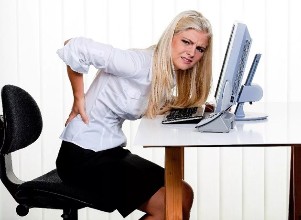
Causes of degenerative disc disease
The causes of the disease are divided into 3 groups. The first is associated with an increase in the load on the spine:
- the excess of weight;
- the hard physical work (in particular, the increases of load);
- profession, which require long periods of standing or sitting;
- wear wear uncomfortable shoes, high heels, bags only on one shoulder;
- posture;
- underdeveloped muscular structure due to a sedentary lifestyle;
- congenital and acquired deformation of the spine;
- a flat foot.
To the second group belong the internal causes:
- the legacy;
- age-related changes;
- the rates of irregularities;
- the intoxication of the body;
- nervous stress, stress;
- serious somatic diseases;
- hormonal changes (e.g. during pregnancy, menopause);
- autoimmune diseases of the connective tissue.
The third group is formed by external causes:
- injuries to the spinal column;
- the lack of vitamins and mineral compounds (in particular, vitamins D, c, b group, calcium and phosphorus);
- bad habits;
- a dream on the uncomfortable mattress and pillow.
Professional sports becomes the cause of premature aging of the intervertebral discs every 20 ° athlete. The process of degeneration accelerated after the half abrupt discontinuation of training.
The symptoms of degenerative disc disease
Low back pain is a chronic disease, that runs with alternating periods of exacerbation and remission. The development of symptoms of acute and contribute to:
- excessive physical activity;
- overwork;
- hypothermia;
- injury;
- the vibrations of the body and the effects of vibration.
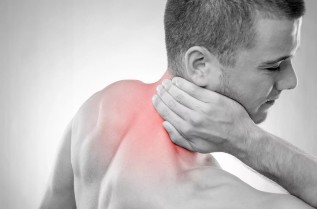
The clinical picture in copd exacerbations depends on the localization of the affected cartilage, the presence of complications.
- For cervical arthritis is characterized by pain in the neck, the hands, stiffness, numbness in the fingers, headaches. If squeezed transmission artery spinal, the human condition is deteriorating: there appears to be throbbing headache, severe dizziness, reduced hearing, you experience "flies in the eyes", are possible fainting.
- Signs of degenerative disc disease of chest: bother, acute or annoying back pain, feeling of a "stake in the chest," the pain of the heart and internal organs, difficulty breathing (hard to breathe a full chest because of the muscle stiffness and pain).
- When lumbar osteochondrosis occurs on the sore back, butt and legs, increasing during the walk. You experience back pain in the lower back during exercise, numbness of lower limbs. Appear dysfunction of the organs of the urinary (pain, disorders of the urinary functions, problems with potency in men, malfunctioning of the ovaries in women). In a period of remission patient feels a slight pain that only occurs under the influence of trigger factors (loads, forced to an uncomfortable posture, and so on).
Low back pain and VSD
Malocclusion in the intervertebral joints can often lead to pinching the nerve roots, blood vessels that feed the brain, irritation, vegetative nodes, responsible for the functioning of the internal organs. These factors are the cause of violations by the cardiovascular and the nervous system. 8 of the 10 patients osteochondrosis develops the syndrome, vascular dystonia (VSD), the symptoms of which:
- sudden changes in blood pressure;
- headaches;
- nausea and vomiting;
- sleep disorders;
- shortness of breath;
- chills or hot flushes;
- the general decrease in the strength.
In more serious cases -, and the possible loss of consciousness.
In 95% of cases a correlation between the well-being of the patient and weather conditions.
The symptoms described are not only low back pain. Patients with a similar clinical picture need a poll to the elimination of somatic and endocrine disorders.
The diagnosis of degenerative disc disease
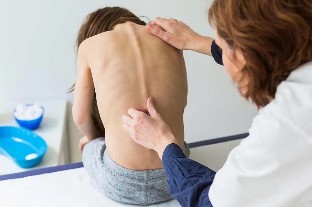
The patient should know that the doctor treats the back pain, for once you get an appointment with the specialist right. The problems of the spinal column occupies a neurologist, to whom to turn in case of back pain, neck, back. The means of the patients with a suspected back pain occurs in several phases and may take from 1 to 7 days:
- survey;
- external inspection of the spine in different body positions (lying, sitting, standing);
- palpation of the spine, you will find around the soft tissue;
- the definition of the amplitude of the movements in the different departments of the spinal column;
- checkups: computerized tomography, magnetic resonance, nuclear resonance and x-ray.
When a difficult diagnosis pass specific studies of the blood vessels and peripheral nerves.
How to cure back pain?
The treatment of degenerative disc disease of the spine long and requires an integrated approach. In therapy of drugs used and methods of physiotherapy is chosen an individual approach to each patient. The therapeutic choice of the scheme depends on:
- the severity of the malocclusion;
- the condition of the patient;
- the presence of complications of the disease.
Important condition for an effective treatment of degenerative disc disease – phasing. Main goal of therapy during exacerbations of the disease — the elimination of pain. The patient is advised of the peace, wearing corsets and special collars for the unloading of the spine. Applied internal and external with treatment of drugs, carry out physiotherapy. In the next step, performing activities that inform the new aggravation:
- therapeutic exercise (dosed physical exercise to strengthen the core musculature and the production of a correct posture);
- therapeutic massage;
- chiropractic;
- reflexology, etc.
Pharmacological treatment
The pharmacological treatment with osteochondrosis aims to eliminate the pain, the regeneration of cartilage tissue, improve microcirculation and trophic in the direction of the segments of the vertebral column. Ill prescribed:
- pain relievers: nonsteroidal anti-inflammatory drugs (pills, injections, ointments, etc);
- muscle relaxants to relieve muscle tension, which appears when osteochondrosis and causes pain;
- the local analgesic treatment – body wraps with novocaine, drugs block, the capsicum, and so on;
- chondroprotectors, which promote the regeneration of the cartilage;
- vitamins and minerals in tablets or in the form of solutions for injection;
- vasodilatatoria drugs to suppress the reflection of a spasm of the blood vessels;
- drugs for the normalization of metabolism in the tissues.
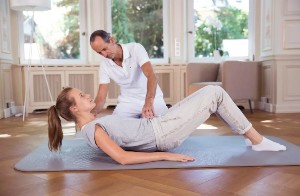
Therapeutic exercise
Physiotherapy exercises or TREATMENT with osteochondrosis promotes the formation of a good muscular armor, which ensures a uniform distribution of the load on the spine. With the regular practice of:
- improves blood circulation and nutrition of tissues of the intervertebral discs;
- it is produced to the proper posture;
- increases the volume of movements of the vertebral column.
Breathing exercises relieve the muscle spasm and pain, and the swimming download, and relaxes the spine.
Medical gymnastics and courses of machinery for rehabilitation are performed after remitting acute symptoms of the disease.
The basic rules of physical exercises:
- the regularity (exercise every day);
- the gradualness of the process (the first lesson lasts 10-15 minutes, every week, there is a need to increase their duration of 5 minutes to 2 months);
- moderation (after the lessons, the patient feels a light fatigue, exhaustion after exercise – a sign of a correct approach to THERAPY).
The exercises do not need to bring the discomfort. When you receive the back pain classes, you need to stop and discuss with your doctor the possibility of additional activities.
The methods of treatment of degenerative disc disease
Complete the conservative treatment of degenerative disc disease, in addition to medical therapy, and physical THERAPY, includes:
- massage: helps to relieve the spasm of the muscles, eliminate pain and improve the circulation of blood in the tissues;
- the reiki;
- physiotherapy: massage, laser therapy, magneto-therapy, the impact of the ultrasound;
- traction of the spine on special equipment;
- reflexology acupuncture: the impact depending on the area and the active points relaxes and relieves pain in the back.
Prevention of degenerative disc disease
Osteochondrosis it is necessary to reduce the load on the spine:
- wear comfortable, quality shoes;
- avoid prolonged stay in an uncomfortable position or in the upright position;
- control your weight;
- observe the correct posture;
- do not lift weights, and, if necessary, to evenly use both hands for the weight distribution.
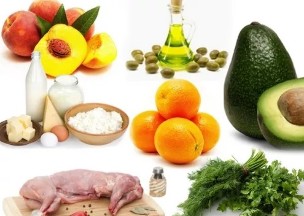
It is worth to take care of your physical fitness and strengthen the muscles of the back, which will help the service in general-firming charge, pool activities, yoga.
An important part of prevention of degenerative disc disease is a diet. You need to include in your diet:
- dairy products;
- the fish;
- broths;
- jelly;
- jelly;
- green leafy vegetables;
- green;
- olive oil and the butter;
- eggs.
From carbonated drinks, alcohol, coffee, fat meat, and savory should be abandoned.
In general, diagnose the back pain is not so simple: it was not independent of symptoms, often roentgen discovers problems with the spinal column of people who has never experienced long-term back pain. The first warning bells for a reason to consult a doctor can be severe headaches, sudden changes of pressure, heaviness, muscle, dizziness when turning the head. Often poor posture is to reflect on one aspect: the hump pronounced hump, heavily arched back and all over the tight abdomen.
































